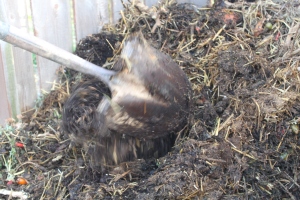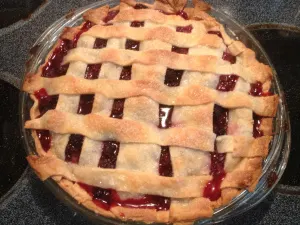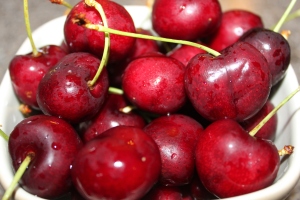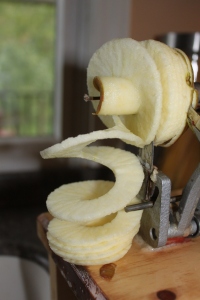For those of us that love to garden – nothing can beat the quick return of bountiful harvests from the planting of tomatoes, peppers, corn and more each year.
However, not to be forgotten are the years and years of fruit harvests that can be provided from a single planting of a few fruit trees to your yard or landscape.
There is something that is so satisfying about getting to plant a fruit tree – it somehow signifies that you are putting down roots of a more permanent nature.
Fruit trees can be a valuable addition for those that are trying to be more responsible for growing their own food – and requires much less maintenance than an annual garden.
Plant Fruit Trees – Fall Planting
Although you can plant fruit trees into your landscape at any point of the growing season – fall is really the best time to plant.
The advantages to planting your trees in the fall are many. For one, the cooler temperatures are much less stressful on the trees and require far less watering than planting trees in the spring and taking them through the hot summer months.
Fall planting allows just enough time for the roots of a tree to become established – getting them accustomed to the soil and preparing them for fast growth the following spring.
Choosing Your Trees:
Whether you would like to grow your own cherry, pear, or apple trees – take care when you select your fruit trees.
Make sure you select varieties that are hardy and tolerant to your growing zone. In addition, most fruit trees require a second pollinator to insure that the trees will bear fruit.
For example – let’s say you like the Fuji apple variety. If you plant a single Fuji apple tree – you may be sad to find out you will never enjoy the tasty apples that so many of us love.
That’s because the Fuji is a self sterile variety – and requires a second pollinator to fruit. So in order to have Fuji apples – you will need to plant a partner tree such as Gala or Granny Smith variety as well.
It may sound a bit daunting at first between selecting tolerant and partner friendly varieties – but almost all nurseries have easy to read pollination charts that can walk you through the process.
And of course – don’t be afraid to ask questions – most nurseries worth their salt will have someone on staff that can guide you through the process.
TIPS TO PLANTING:
Planting a fruit tree is actually a very simple process.

Get More Out of Gardening with Quality Garden Tools and Garden Supplies at Plow & Hearth!
Dig your planting hole about two to three times the diameter – and about 1 1/2 times the depth of the container that your tree came in.
Once your hole is dug – mix back in equal amounts of compost and soil to the bottom of the hole, filling it up enough so that the top of the tree’s root ball sits about and inch or so above the top of the hole.
At this point, water the root ball generously (a few gallons) – and then fill in around the rest of the hole with equal amounts of compost and soil.
When your tree is completely planted – you want the base of the trunk to be just above ground level – allowing for good drainage.
Apply a 2 to 3″ layer of mulch (shredded hardwood mulch, straw, or shredded leaves work well) to help the tree retain moisture and protect the root ball from winter. That’s it!

Can anything be better than a fresh fruit pie?!
You will want to water your trees for the remainder of fall – applying a few gallons around the root zone when mother nature doesn’t provide her own. If your tree is large enough – you may also want to stake it to provide protection from winter winds.
As for spacing – on average most dwarf trees should be planted about 8 to 10 feet apart – and at least 12 feet between rows. For semi-dwarfs 10 to 12 feet apart and 14 to 16 feet between rows, and for full size trees, your best bet is to read the label to make sure you leave adequate growth for specific trees.
With a little work this fall – you can be enjoying your favorite fruits for years to come!
Happy Gardening! – Jim and Mary
If you would like to receive our DIY & Gardening Tips every Tuesday – be sure to sign up to follow the blog via email in the right hand column, “like” us on Facebook, or follow us on Twitter. This post may contain affiliate links.




